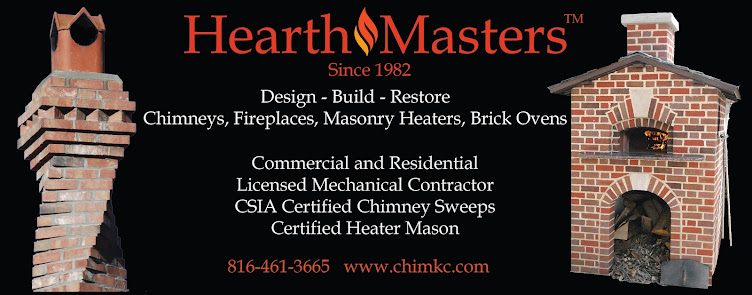By Marge
Padgitt, CSIA Certified Chimney Sweep, NFI Certified Wood-burning Specialist
President, HearthMasters, Inc.
Homeowners need to be aware of the risks of Carbon Monoxide hazards with
chimneys serving gas appliances. This can be a real issue when getting a home
ready for rent or sale. Chimneys are the LAST thing anyone investigates, and
are often overlooked when it comes to budgeting a remodel or restoration
project.
 |
© Kheng Guan Toh |
Chimneys and
their flue liners and connecting pipes are designed to get toxic heated flue
gasses out of the house. If a chimney is in poor condition or blocked it cannot
perform its intended function, putting the occupants at risk. It is interesting
to note that even with installation of CO detectors, low levels of CO (less
than 9 ppm) which do not register on a detector. can cause long term health
problems and even irreversible brain damage. Visit www.coheadquarters.com for more information on Carbon Monoxide symptoms, hazards,
and more.
When inspecting a chimney what professional chimney sweeps look for are items that can be risks to the occupants. Among these are:
- § Damaged or deteriorated flue liner
- § Missing mortar joints between tile flue liner sections
- § No flue liner installed as required by IRC code
- § An abandoned water heater (new furnace installed, water heater is left to vent alone)
- § Flue liner too large for the appliances to vent properly
- § Flue liner too small for the appliances to vent properly
- § Connecting pipes installed incorrectly
- § No chimney cover installed to keep damaging rain, birds, and animals out of flues
- § Debris (sand, mortar, twigs, bird nests) clogging the flue
- § Masonry chimney in poor condition, missing mortar joints
- § Cement crown deteriorated, cracked, or missing, allowing rain water to enter the chimney
Carbon Monoxide is odorless, tasteless, and colorless.
During
winter months when houses are closed tightly, the problem with CO becomes much
worse. There is often inadequate dilution air provided so CO and other toxic
gasses from off-gassing of carpet, woodwork, furniture, etc. increase in
volume, making the indoor air quality worse than the rest of the year. As a result, the occupants can experience
unexplained headaches, nausea, dizziness, fainting, or death.
If the house is
under negative pressure this can exacerbate the problem. A whole house
ventilator may be needed in addition to chimney repair to bringing the chimney
to code and working order.
The most commont
problem with chimneys serving gas appliances is rain. Rain water entering a
chimney from the top through the flue or gaps in the cement crown cause mortar
joints to wash out of the flue liner. Typical clay tile flue liners have mortar
joints between each two-foot tile section.
Excessive condensation of flue gasses is also a major cause of missing
mortar joints. This occurs when the flue liner is sized too large for the
appliances and this is extremely common.
Methods of repair: There are different methods for
relining, lining, or repair available. Your chimney professional is the best
qualified person to address these issues and offer recommendations.
Licensing: Note that a Master Mechanical
Contractor License is required to do chimney flue relining or repair in the
greater Kansas City area. Check with the Johnson County Contractor Licensing
website at www.jocogov.org /dept/planning-and-codes/cls/home to find a licensed
contractor.
Finding a Professional: The Chimney Safety Institute of
America offers training for professional chimney technicians. The CSIA
Certified Chimney Sweep designation is a minimum requirement to look for when
hiring a chimney pro. Certified Chimney Sweeps know the Codes and Standards and
correct methods for repair. Visit www.csia.org for more information. Additionally,
request proof of liability and workers comp insurance and contractor licensing.
Make sure the contractor pulls a permit for the work and it is inspected by the
building inspector. Also check Angie's List for reviews. Unfortunately, there
are a lot of untrained and unqualified chimney companies in existence so due
diligence will pay off in the end. A mistake in this area can be deadly for
occupants so it isn’t worth going the cheap or DIY route.


Great Article as usual. See you at the convention.
ReplyDeleteBest Regards,
Doug CCS 7338